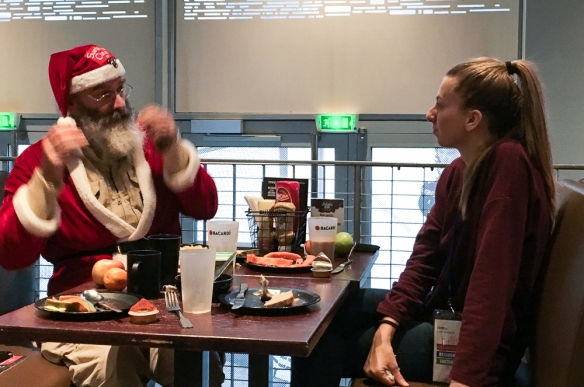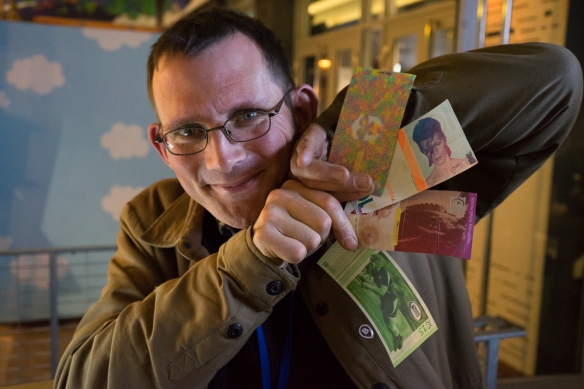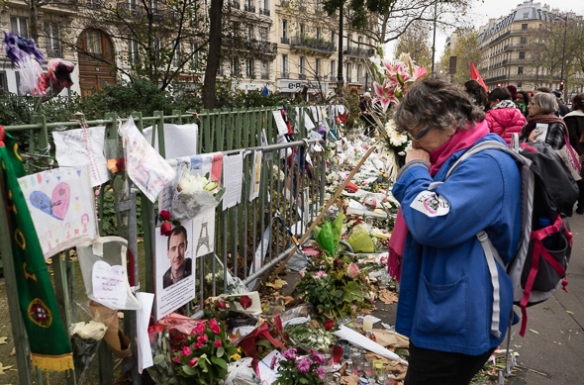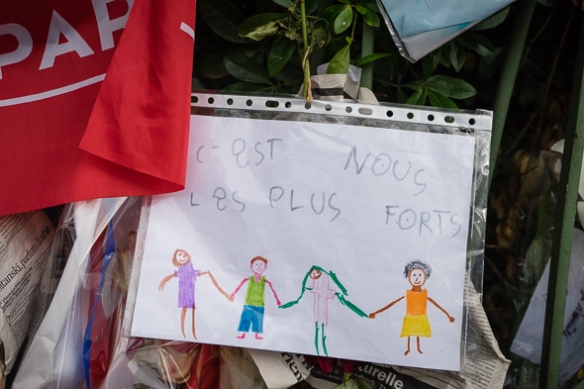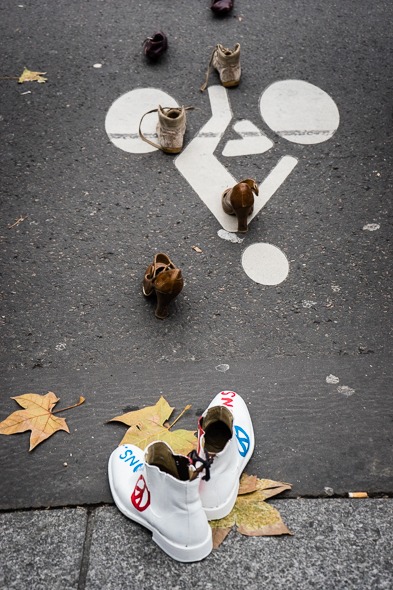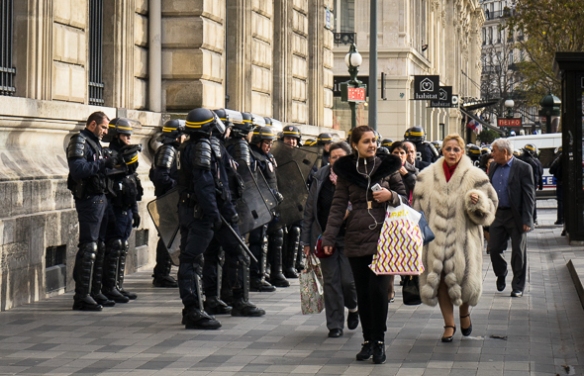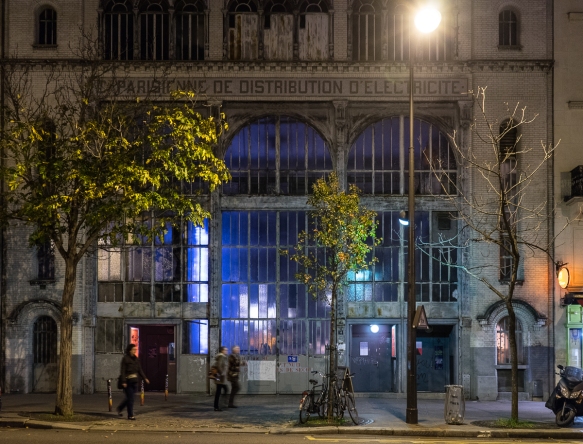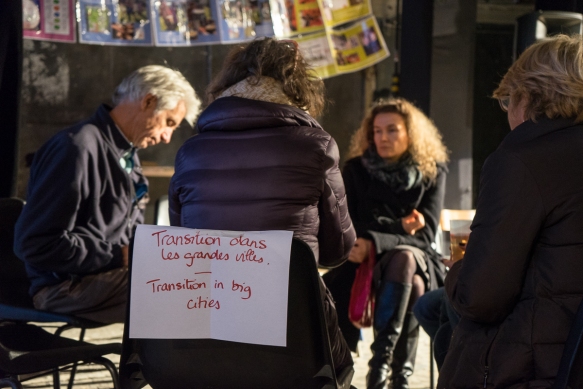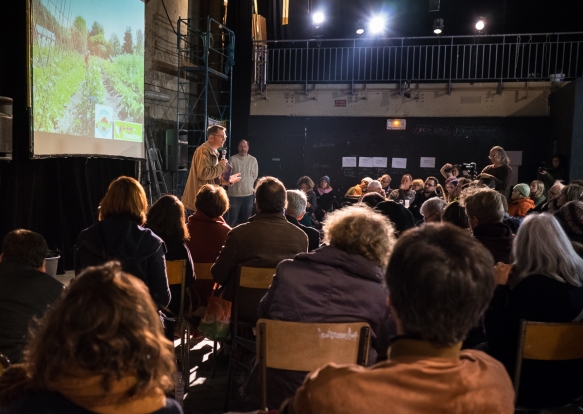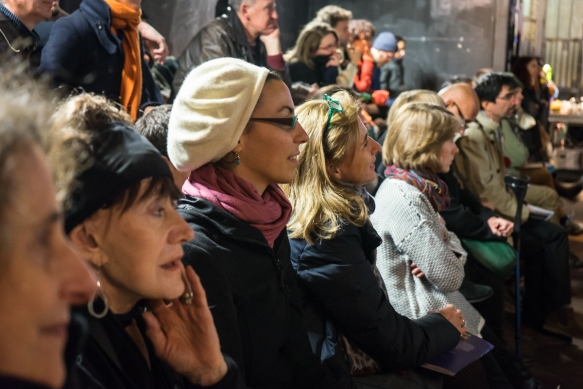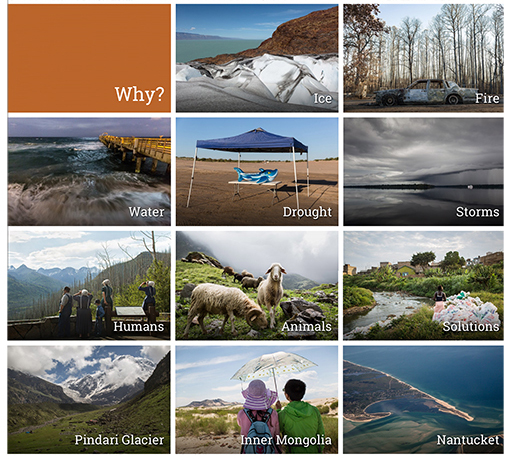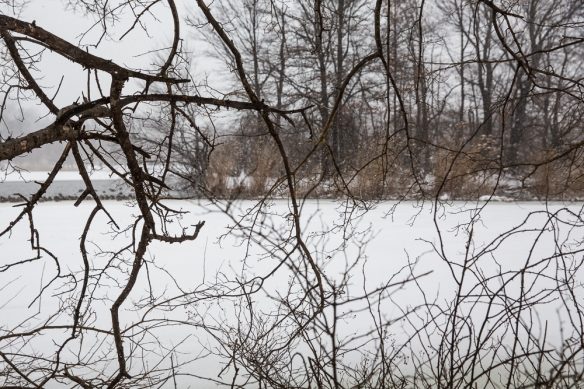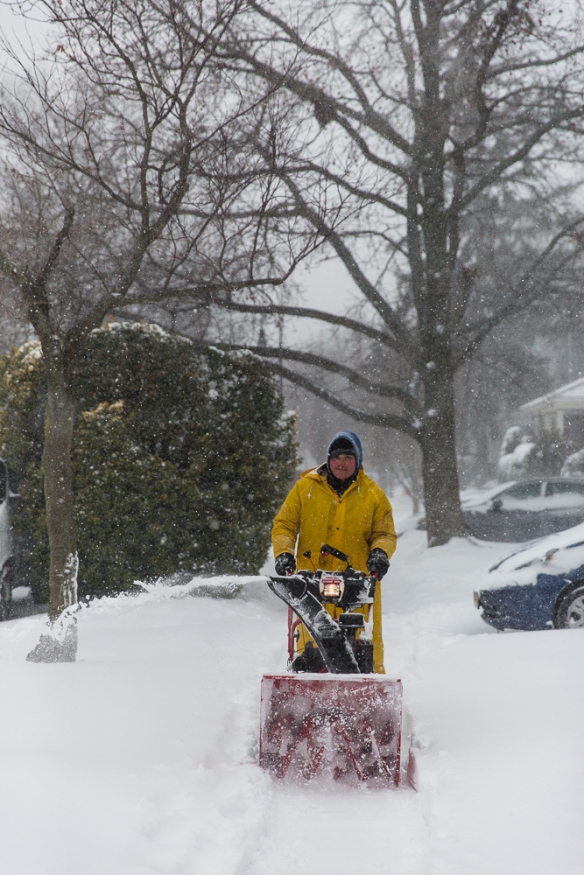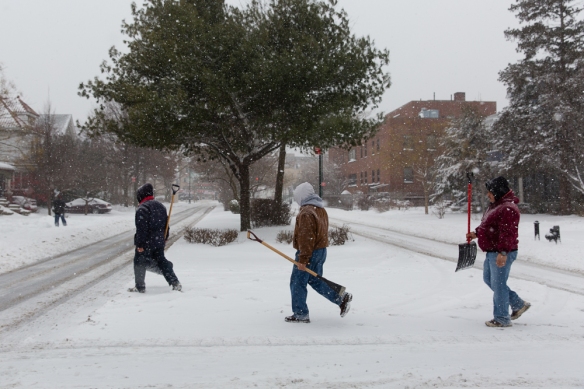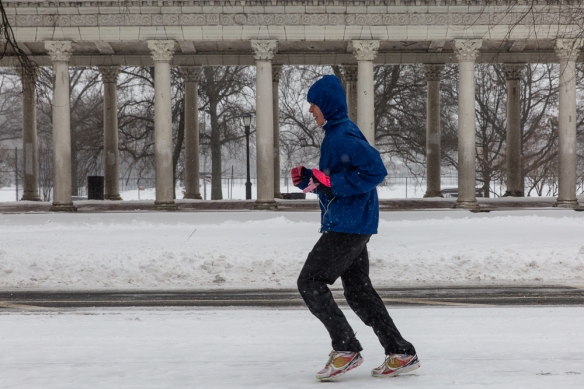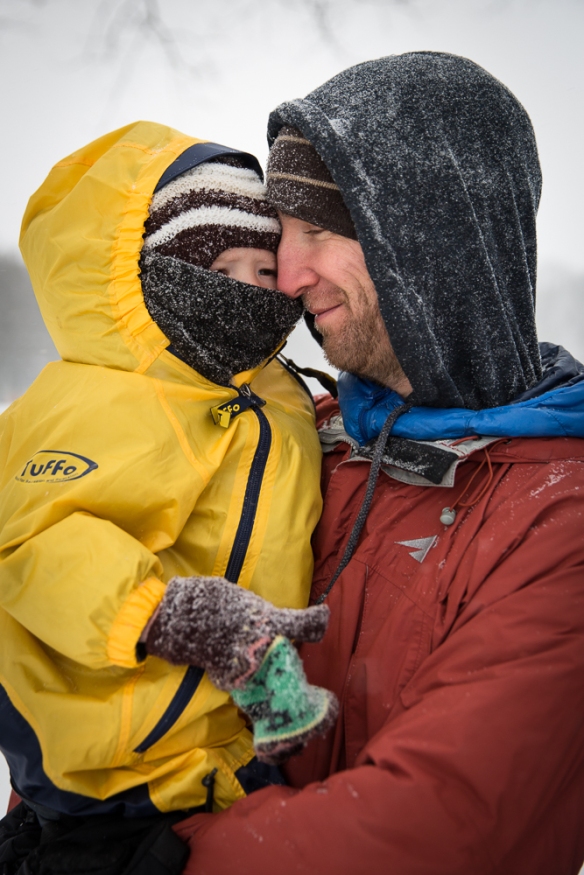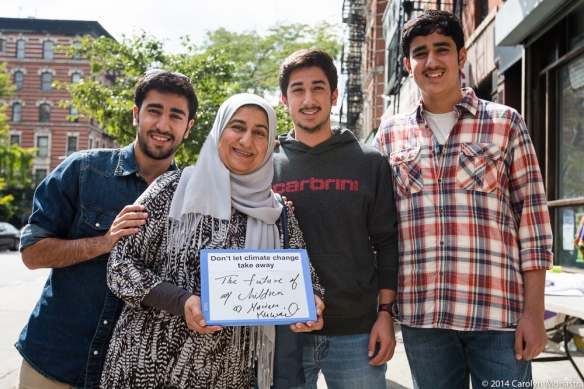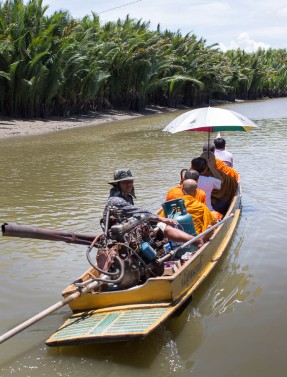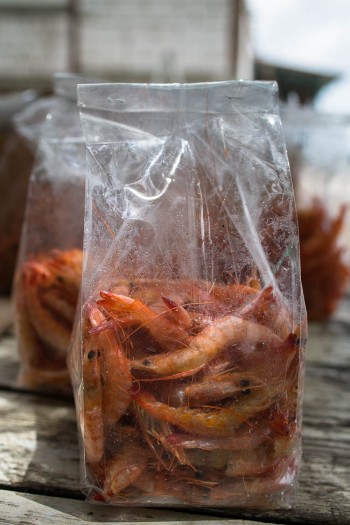I was thrilled to hear yesterday that leaders from the nearly 200 nations assembled in France for the COP21 were able to finalize a new global climate agreement that will ostensibly limit greenhouse gas emissions to prevent temperatures from rising more than 2 degrees C (3.6 degrees F) by 2050. It is not as strict or encompassing as many nations and climate activists had hoped, but it is a hopeful start to moving towards plans to prevent temperatures from rising more than 1.5 degrees C (2.7 degrees F) and limit other devastating changes in the climate such a sea level rise, storms, droughts, and flooding. Many of these climate impacts will continue to be felt, but this treaty is the first step towards making all nations more accountable.
____________________________________________________
Below, I continue with my recap of my activities in Paris during the first week of the COP.
Day 5-6: Wednesday – Thursday, December 2nd – 3rd
These two days I was involved in the second of the three “Creative Factory” workshops that were organized by Place to B during this first week of COP21:
- Dismantling the Buying Imperative: Getting to grips with behavior change and identity
- The Balm of Nature: Reconnecting with the wonder and healing power of the natural world
- Invoking the spirit of change: Harnessing the power of spirituality, and broadening the engagement with faith-based communities.
Also held that week were a Transformational Media Summit –a workshop focused on talking about ecology with media professionals and an Urban Gardening Workshop that crafted some garden boxes out of recycled palettes and installed them around Paris.
The Place to B’s theme for Day 4 was What is the role of technology in changing the world?
We need to scale up decarbonization with major Research, Development, Demonstration and Diffusion efforts (RDD&D) to develop low-carbon technologies and ensure their availability and affordability.
And for Day 5 it was How to reconnect with our human nature? What if we remember how it was when we lived in harmony with nature? What if we were reconnected to the earth, the biodiversity, the seasons? How can we recreate such a harmony? Is it possible?
This latter theme fit in well with what we were trying to accomplish in the Balm of Nature workshop I participated in on Wednesday and Thursday. After several engaging and informative presentations by some of our co-pilots (David Holyoake and Chris Aldhous) and a few guest presenters (see photos below), we divided up into three groups. Our mission? To create projects that would reconnect people with nature.

A panorama of the Balm of Nature Workshop participants during a skype call with Australian “Solar Punk” author Caroline Rental.

David Holyoake (left) giving advice and encouragement to my teammates: Scott, Eve, and William.

Jerome Veil is a beekeeper from Miel de Quartier

Paul Beer, an artist who was industriously making some fantastic collages in the back of the room during the week.

Collage by Paul Beer

Collage by Paul Beer – I was thinking the Rev. Billy Talen might like this one for his “Church of Stop Shopping”

Florence Scialom spoke about the work she does with The Network of Wellbeing
My gang of four (myself plus fellow American Scott Shigeoka along with Eve Demange and William Tan, both from France) decided to create a card game. After a lot of brainstorming and planning we chose to name it WILD – to play with the double entendre of having a wild and crazy time but also to reference wildlife. Initially, we thought of our target audience as youths, ages 15-25 years old. But, after playing a test round with our co-pilots, we realized that everyone who played, from those in their 20’s to 50’s, seriously enjoyed it.
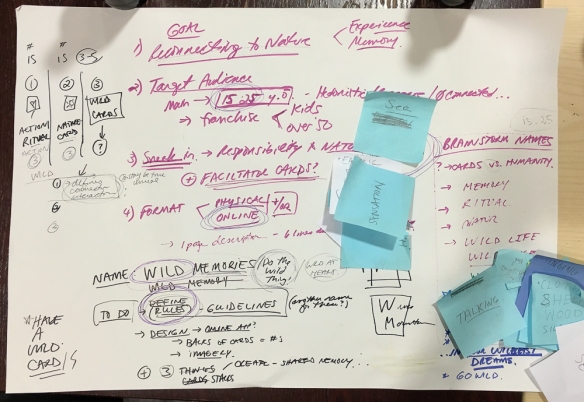
Notes from our brainstorming session on Day 1 of the Balm of Nature workshop
The game has two sets of cards – ones with the red WILD logo list daily rituals or activities that everyone around the world does and the blue ones list natural elements. A dealer turns over one of each card and the teams of two have one minute to share a memory or create a story to tell their partner using those two words. When the time is up a spinner is spun and whomever it points to has to share their story with the group. To spice things up there are several WILD cards in the deck that up the ante on the story-telling (for example: sing your memory or hop on one foot while sharing your story).

Our prototype cards
At the end of the second day, all three groups shared the results of their projects with the rest of the workshop participants (Click on the thumbnails to see the pictures larger):

The group that worked with artist Shiraz Bayjoo (far left) describing their process in making a video about reconnecting with nature.

This group did some urban guerrilla work by creating “thought bubbles” which they then placed around the very non-green non-green neighborhood near Place to B.

“Planet earth? 6 cm in this direction.”

“God, I hate concrete”

This group had to search pretty hard to find any greenery nearby.

Karl Walker looking for birds outside Gare de L’est.
When it came my team’s turn to share, we decided to vamp it up a bit, so we came dancing in to the song, “Wild Thing” by the Troggs. And since it was happy hour, my team bought a round of beers for all who played. (Note: If all players are of legal drinking age, we recommend making it a drinking game since it helps loosen people up a bit to share.) We still have a few kinks to work out in the game, but based on the response we got it seems to be fulfilling our wildest dreams of helping folks reconnect with nature and create a stronger sense of community.

Some of our workshop co-pilots playing “Wild” during our test run.
My teammates and I decided we liked the physical card game but recognize that if it was an online game it might draw a younger audience and create its own community that way. We envision there being a WILD gamer community and WILD parties. I am bringing our first run of the game home with me to test with my own students and see if our initial target audience of “today’s youth” shares the same enthusiasm for the game that our climate activists had. We were all asked to sign a creative-commons agreement that will allow our projects to be adopted and adapted by anyone who wishes to utilize them. Scott set up a Facebook page for the game so you can find the cards and instructions there! So go get your WILD on!
Days # 6-7: December 4-5th
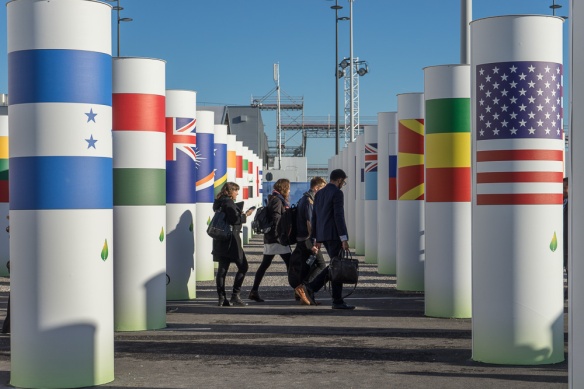
Outside the climate negotiations pavilion, these pillars featured flags of the nations participating in the COP21 talks.
Although I was glad I was able to participate in the Balm of Nature workshop, I was anxious to go out to Le Bourget to see where the actual COP21 was being held and to check out the “Climate Generations” Pavilion. Since Place to B, where I was staying, was close to Gare du Nord, it made the trip up to Le Bourget very easy: just a short train ride and then another 10 minutes on shuttle buses provided for the COP.

A cool “abre a vent” or wind tree near the entrance to the COP21 buildings. Its “aeroleaves” spin to collect wind which is transformed into electricity. Unlike traditional wind turbines, its operation is completely quiet … and quite mesmerizing too. (Created by New Wind)
The cloudy skies that had been lingering all week had finally cleared, making it a gorgeous day for my expedition. I was hoping I might get to at least peek into the building where the negotiations were happening but as there were staff checking IDs and armed police were all around, I decided this would not be the time to try to push my luck.

A slightly surreal tableaux outside the Climate Generations Pavilion.
All week I felt attuned to the presence of the police in Paris. Even when safely inside Place to B, with some frequency, I heard sirens out on the street. I wasn’t sure if their presence made me feel more safe or more uneasy.
Unlike the building where the negotiations were being held, the Climate Generations Pavilion was free and open to the public. Three exhibition halls housed booths by over 100 organizations such as UNESCO, The Climate Reality Project (for which I am a trained Climate Leader) The Environmental Defense Fund, The Sierra Club, The Global Ocean Forum, and Birdlife International. Many cities from around the world also had booths touting their “green” economies. And, other special-interest groups, such as The Indigenous and Tribal Peoples of Suriname and Women and Gender Constituency, were represented as well.
In between these three main halls were side rooms where presentations, exhibitions, and screenings were held. In the middle of the building, a wide main corridor contained a work area for journalists, a pedal recharging station, a booth that had a twister game set up, and a place to have your picture taken with a styrofoam #COP21 sign.

I was happy to see some people using bike power to get to Le Bourget….

And I thought this pedal recharging station was a nice touch.

I was not so enamored of the #COP21 sign which was made out of styrofoam – a strange choice of material for an environmental conference!
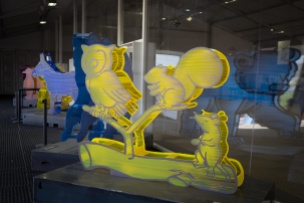
I also wondered what would become of these plastic animal statues? Could they be recycled or maybe find a new home at a school?
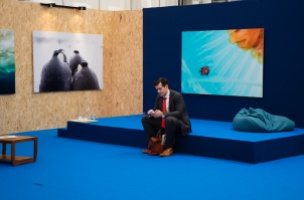
A visitor taking a break in front of one of the art exhibits.

One booth encouraged people to fill in the blanks on these signs and then walk around the conference with it on a pole to help you find your missing link.

It was a treat to run into my friend Tatiana Speed (right) with her friend Luke Wallace.

A new friend that I met my first hour at Place to B: Laughlin Artz of Context News

One of the many interesting displays.
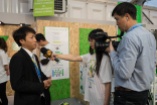
There were people being interviewed nearly everywhere I looked.

Patty from Mexico City writing out her wish for the environment as part of The Ribbon Project.

Some environmentalists from Brazil hoping to save the planet!

A movie about HImalayan Glaciers.
One of the things on my agenda that day was to stop by the booth run by Ecolise – “a coalition of organizations engaged in promoting and supporting local communities across Europe in their efforts to build pathways to a sustainable future.” I had met some of the Ecolise members at the International Permaculture Conference in the UK that I had attended and exhibited my photographs at in September. It was at the IPCUK that I met Gil Penha-Lopes who along with Tom Henfry were writing a book, Permaculture and Climate Change Adaptation, that they were hoping to have ready for the COP conference. They asked if they could use some of my Witness Tree photos in the book. I was very happy to support their efforts and even more pleased to see the published book available at their booth. It is a well-crafted and informative book featuring over a dozen of my photos!

Although there were many engaging exhibits at Climate Generations, and I met many interesting people, I found the overall atmosphere to be a little flat. I had felt much more energized by the vibe and activities at Place to B. So after several hours of wandering around the pavilion, I decided to head back to Paris. I wanted to rest up before heading out to La Recycleria, a hip hangout spot that was hosting performances by youth activists that evening and on many other nights during the conference weeks.
Day # 8: Saturday, December 6th
I knew there was a gathering of Climate Reality Project Leaders back out at the Climate Generations Pavilion, but I was feeling that I had spent too much time indoors and I was eager to walk around the city, see some more climate exhibitions, some art, and meet up with a friend from my travels for a cup of tea too.
My first stop was a special climate exhibit at de L’Hotel de Ville featuring displays about eco-energy projects from around Paris. I had wanted to try to visit some of these sites in person, but with limited time, I figured this was one way to learn about some of these green projects in one location.
Upon seeing this “Generous Tree” (below) I was wishing I had a front yard to “plant” either the “wind tree” I saw at Le Bourget or this one whose solar panels are said to provide me with “wellbeing, connectivity, and conviviality.” I wonder if my co-op board would replace the tree that used to be outside my back window but was felled by a severe storm with one of these? Surely the whole apartment building would benefit.
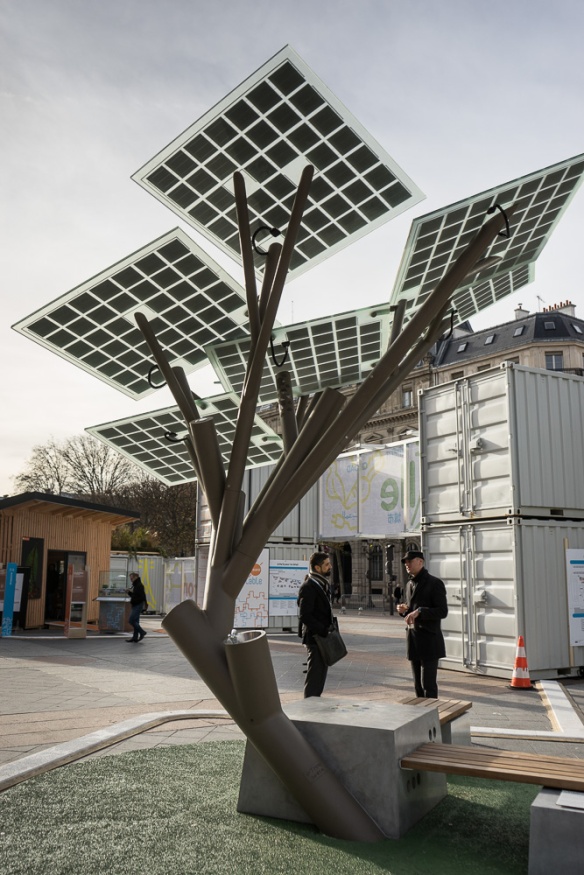

Next stop was Ice Watch – an installation by artist Olafur EIiasson and geologist Minik Rosing. It was originally scheduled to be at la place de la Republique but was moved to the plaza in front of the Pantheon after the terrorist attacks in November. The artwork consisted of 12 icebergs that had been harvested from the sea outside Nuuk, Greenland and were arranged in a circle like a clock. The installation was created so that the ice would slowly melt as the clock of the climate negotiations was ticking.
Even though I have been to both the Arctic and Antarctic and seen very large icebergs in person, this was still a magical experience. I especially enjoyed watching the expressions of the children as they interacted with the ice and were told some facts about the ice (80 tons of it!) and climate change by some of the Ice Watch guides.
After getting all chilly with the icebergs, I was ready to warm up.
I met my friend  Kathyrn Hudson for tea at Mariage Freres in the Marais – one of my favorite neighborhoods. If you have ever been to Paris – you know what a treat it is to have high tea there. And, if you haven’t been, you should put it on your list of places to visit when you next visit Paris.
Kathyrn Hudson for tea at Mariage Freres in the Marais – one of my favorite neighborhoods. If you have ever been to Paris – you know what a treat it is to have high tea there. And, if you haven’t been, you should put it on your list of places to visit when you next visit Paris.
I first met Kathryn in Hawaii when I was traveling during my 2011-12 sabbatical – doing the majority of my work on The Witness Tree. I felt like I had come full-circle in filling her in on what had happened to the project since we’d first met. It was good to reconnect with her after so long and, of course, the tea was delicious.
My last stop for the day was at Le Centre Georges Pompidou. As this was my last day in Paris, I couldn’t leave without sampling at least a bit of its wonderful museums – several of which had special exhibits to coincide with COP21. I had gone to the Palais de Tokyo earlier in the week with my two roommates to see Exit – an amazing video project created by Diller Scofidio + Renfro (and others).

A piece primarily about migration, it was originally created in 2008 but was updated to be screened during the climate conference. I found this video of it online but it doesn’t quite convey the powerful experience I had of sitting in a large, dark, circular room as its astonishing statistics unfurled on the long semi-circular screen – both enveloping and implicating you in some of the sad facts of today’s world.
Although Centre Pompidou had some pieces that were selected to coincide with the COP – such as this installation by Thomas Hirschorn, Outgrowth (2005),

I spent most of my time there looking at a photography exhibit and film about Cuba by Agnes Varda, installations by Dominique Gonzalez Foerster and paintings / drawings by Wilfredo Lam.
My favorite exhibit, however was a long table full of tiny houses made of small colorful candles. Created by Chinese artist Chen Zen, the project entitled Beyond the Vulnerability was created in 1999 with children of the favelas he was visiting in Brazil. Although this exhibit was not one of the ones selected for the COP activities, to me, it has strong references to the climate crisis. 
A statement said that Chen Zen built these to reflect on the “precarious character of favela homes and the shimmering luminosity of Brazilian baroque architecture.” But, I was thinking, that if the government negotiators had not reached a global climate agreement, we may as well all be living in wax houses which would melt with global warming or be knocked down by increasingly severe storms or rising sea levels. We are not “beyond vulnerability” as some Americans and too many of our politicians seem to think.

Chen Zen states about his work: “I’m looking for a language through which I can engage with the source of the Universe and the heart of the human.” I agree with his goals, and I hope that through my on-going work with my Witness Tree project, that I can affect the minds and hearts of my audiences to think about our collective impact on our world.














































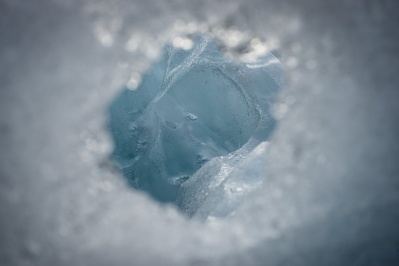
 Kathyrn Hudson for tea at Mariage Freres in the Marais – one of my favorite neighborhoods. If you have ever been to Paris – you know what a treat it is to have high tea there. And, if you haven’t been, you should put it on your list of places to visit when you next visit Paris.
Kathyrn Hudson for tea at Mariage Freres in the Marais – one of my favorite neighborhoods. If you have ever been to Paris – you know what a treat it is to have high tea there. And, if you haven’t been, you should put it on your list of places to visit when you next visit Paris.



